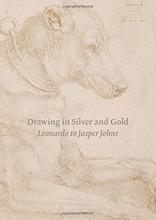More about Hans Baldung Grien
- All
- Info
- Shop
Works by Hans Baldung Grien

Sr. Contributor
Hans Baldung had a unique perspective and was never one to censor his vision.
Hans Baldung was a major German Renaissance artist who had a fascination with witches, erotica, and pagan imagery. So, naturally, he received numerous commissions for cathedral altarpieces. When the commissions made him financially successful, he hired assistants to help out so he could spend more time creating images of witches on the side.
Baldung came from a wealthy family of lawyers and doctors. Among his relatives was the personal physician of the Holy Roman Emperor Maximilian I. Choosing to follow his passion for art made him an outlier in his family, but, even when striking out on his own, he never became a typical starving artist. Later on in his life he became so successful that he was one of Strasbourg’s wealthiest citizens.
While studying under Albrecht Dürer, Hans Baldung apprenticed alongside Hans Schäufelein, Hans Süss von Kulmbach, and Hans Dürer. To distinguish himself from all the other Hanses, he added “Grien” to his name, in honor of his favorite color. But his talent alone proved enough for him to stand out in Dürer’s eyes. Baldung was considered his best pupil and after Baldung opened his own workshop the two still kept in touch, staying friends the rest of their lives.
Dürer’s influence on his art is apparent in his early works, especially in the altarpiece commissions Baldung did during his apprenticeship. But his later works have a noticeably darker tone which some have argued is the product of a violent temperament or perhaps he was simply embracing his morbid fascination with death.
What truly set Baldung apart as an artist was the unique perspective he brought to classic themes. He was the first to depict the fall of man through an erotic lens; nowadays applying such a perspective is just called rule 34, but at the time it was unique. He also took an interest in mythological figures, but portrayed gods in a humanist manner instead of depicting them with reverence.
His large body of work includes many iterations of the same theme, such as Death and the Maiden, and his own concept of life and death shows through in these works. As his views on life changed, so too did his work. Over time, his art became wilder in expression and darker as he grew closer to accepting his own mortality.
He snuck a cameo of himself in his last major altarpiece commission, Martyrdom of St. Sebastian. Cleverly not-so-hidden near the center of the central panel of the piece is a self-portrait of him wearing - you guessed it - green.
Sources
- Abrahams, Simon. "EPPH - Every Painter Paints Himself." EPPH | Art's Etymology. Accessed December 20, 2018. http://www.everypainterpaintshimself.com/article/hans_baldung _griens_st._sebastian_altarpiece.
- "Hans Baldung Grien." In The Dictionary of Art: Volume 3, edited by Jane Turner. New York: Grove, 1996.
- "Hans Baldung Grien (German, 1484/1485 - 1545) (Getty Museum)." The Getty. Accessed December 15, 2018. http://www.getty.edu/art/collection/artists/595/hans-baldung -grien-german-14841485-1545/.
- Hand, John Oliver, with the assistance of Sally E. Mansfield. German Paintings of the Fifteenth through Seventeenth Centuries. The Collections of the National Gallery of Art Systematic Catalogue. Washington, D.C., 1993: 12-13.
Featured Content
Here is what Wikipedia says about Hans Baldung
Hans Baldung (1484 or 1485 – September 1545), called Hans Baldung Grien, (being an early nickname, because of his predilection for the colour green), was a painter, printer, engraver, draftsman, and stained glass artist, who was considered the most gifted student of Albrecht Dürer and whose art belongs to both German Renaissance and Mannerism.

Throughout his lifetime, he developed a distinctive style, full of colour, expression and imagination. His talents were varied, and he produced a great and extensive variety of work including portraits, woodcuts, drawings, tapestries, altarpieces, and stained glass, often relying on allegories and mythological motifs.
Check out the full Wikipedia article about Hans Baldung
















